

A newspaper clipping ca. 1953.
“New Data Machine Performs Math Miracles for Missileers” declaims the bold and italicized headline of a well-preserved clipping, carrying with it no publication attribution nor date. The clipping continues:
Here, “MSD” stands for the Missile Systems Division of the Lockheed Aircraft Corporation. Lockheed created MSD in 1953, placing it in Van Nuys, California—just north of Hollywood in the Los Angeles Basin, and a short drive from Lockheed’s headquarters in Burbank to the east. MSD’s remit was to get Lockheed into the military missile race for nuclear ICBMs, guided missiles of various stripes, and also satellites and their launching. By 1957, MSD was redubbed the “Missiles and Space Division,” and had relocated north, to Sunnyvale on the San Francisco Peninsula where it would become the area’s largest employer as it developed and produced the submarine-launched nuclear ballistic missile, Polaris. From the casual use of MSD, one can infer that the “Math Miracles for Missileers” article was clipped from some internal Lockheed publication.
But what of the “new electronic data processing machine” that could achieve these “fantastic” calculations? The article continues:
Today, the IBM 650 is recognized as among that firm’s first commercial electronic computers, but the word “computer” did not yet find its way into the clipped article.
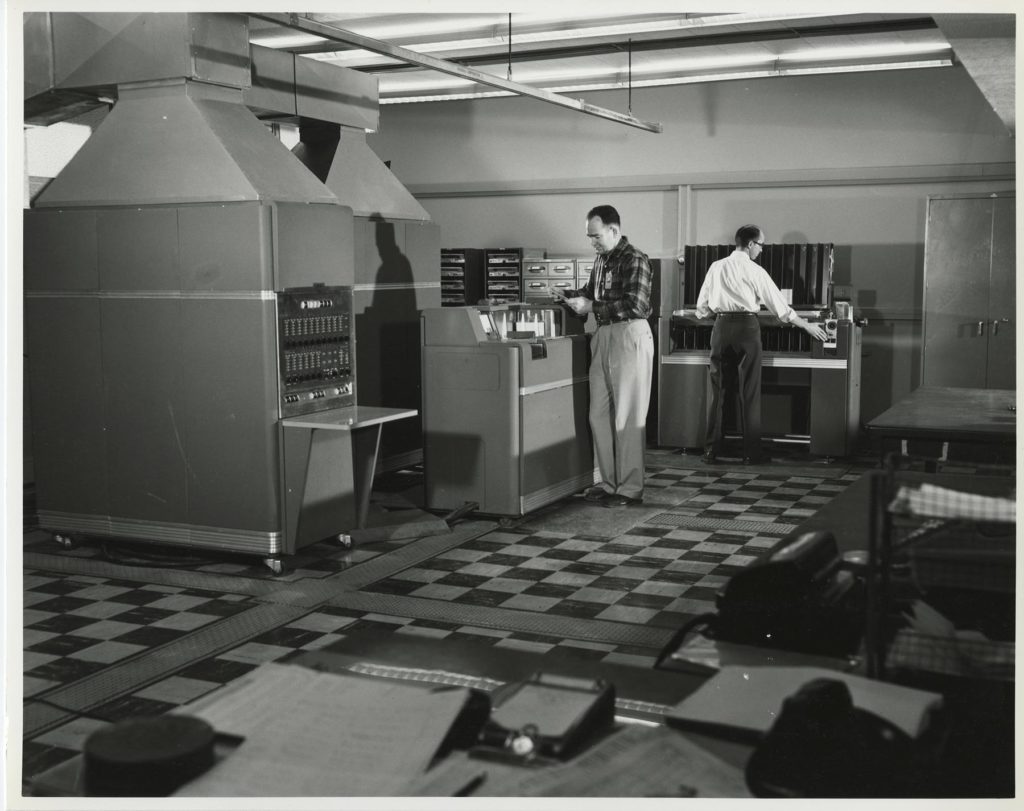
IBM 650 Electronic Data Processing System, November 1956.
What was MSD’s 650 to do?
How is it that this clipping has survived to the present day? How is it that it is available in digital form to reproduce here as an illustration, for you and your author to read? The necessary cause was that Robert W. “Bob” Bemer—who worked at Lockheed’s Missile Systems Division in Van Nuys at this time and who would become its IBM 650’s power user—carefully cut out the article and placed it into a scrapbook. The sufficient causes were that after Bemer’s death in 2004 at the age of 84, Bettie Bemer, his wife, donated all of Bemer’s personal papers to the Computer History Museum (CHM). In 2018, the Museum used its recent Access to Historical Records grant from the National Archives’ National Publications and Records Commission to create a finding aid for the Bemer papers and to digitize and make freely available online roughly 10 percent of the collection, over 3,000 pages.2
Bemer, who had graduated with a mathematics degree from Albion College, had worked in computing at RAND, Lockheed, and at Marquardt Aircraft before joining Lockheed’s Missile Systems Division in 1954. By the time Bemer returned to Lockheed, he was one of the longest-term and accomplished users of an early contribution from aerospace engineering to electromechanical computing: The IBM-CPC, the “card-programmed calculator.”
A few years earlier, in 1948, engineers at Northrup Aircraft’s Hawthorne facility near the Los Angeles International Airport, made a novel connection between an IBM calculator and an IBM accounting machine (a high-end tabulator). The resulting system was a calculator in which the sequence of operations could be controlled—programmed—by properly coded sequences of punched cards fed into the accounting machine. Critically, the operations performed by the system and controlled by the punched cards were determined by another programmed element, a very carefully and specifically wired plug “board” within calculator. These boards defined the space of operations that could be performed, while the punched cards determined what actually took place within this space. With their self-made system, Northrop engineers could automate complex technical calculations needed for their aerospace R&D. 3
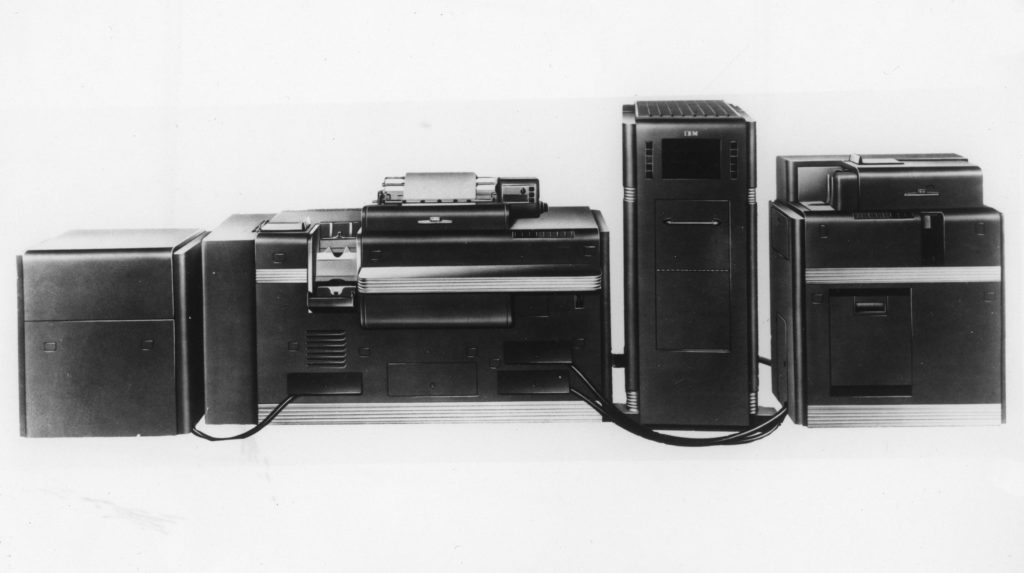
IBM Card-Programmed Calculator (CPC)
IBM saw in the work of the Northrop engineers, and their enthusiasm for it, a market, quickly turning the user innovation into a standardized and designed product announced in November 1948, the IBM-CPC. IBM’s imagination of a market proved productive: By the mid-1950s, aerospace and other engineers, private firms, and government organizations gobbled up some 700 of the CPCs. The newly digitized portions of the Bemer collection show us that, if one counts his early résumé as generally accurate, then Bob Bemer not only encountered the IBM-CPC very early in 1949 at RAND, but that he also used the first and fourth CPCs ever manufactured by IBM.4
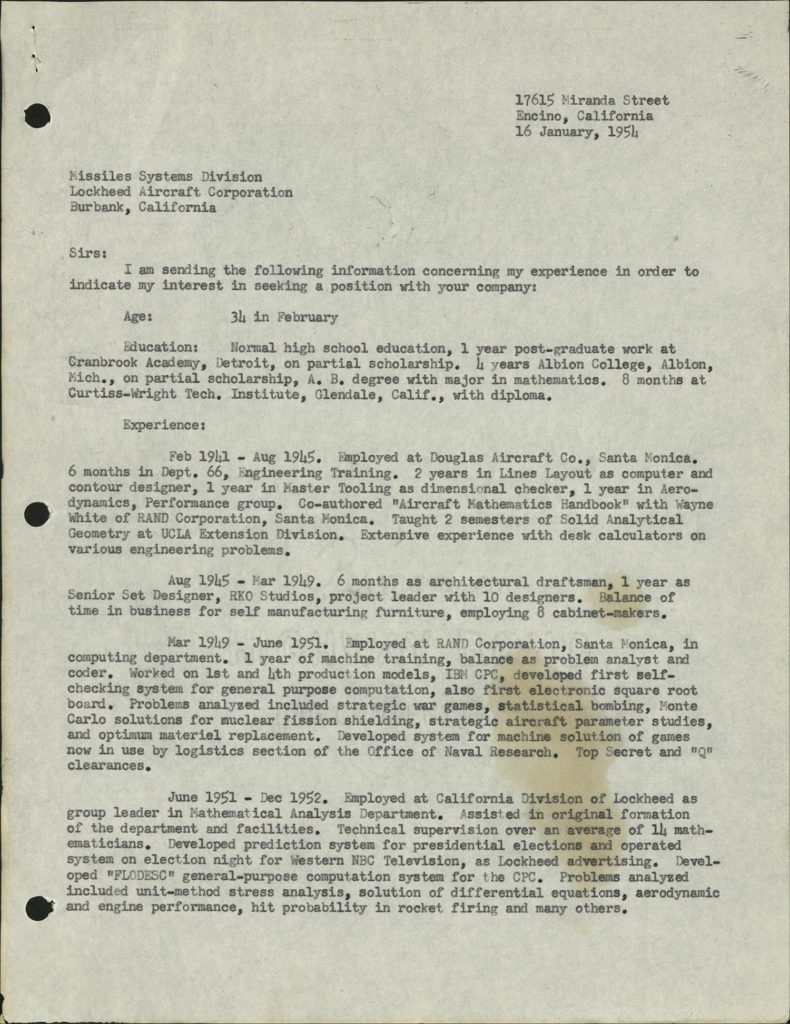
A job application sent to the MSD at Lockheed.
At RAND, Bemer learned to “code” the CPC to produce calculations central to some of the most pressing concerns of the new Cold War defined by nuclear weapons—the Soviet Union detonated its first nuclear bomb shortly after Bemer joined RAND—delivered by aerospace vehicles. Bemer used the CPC to “analyze” such “problems” as “strategic war games,” “statistical bombing,” “nuclear fission shielding,” and “strategic aircraft perimeter studies,” whatever that may mean. Moreover, at RAND and shortly afterward at Lockheed through 1952, Bemer developed what he called “systems” for the CPC that were, in essence, system software or operating systems of a sort. Bemer’s CPC systems were programmed boards that defined a space of operations within which calculations could be automated through programmed control by punched cards. One of these systems, named FLODESC, was described by Bemer as a “general purpose computation system for the CPC.” Particularly, it afforded the ability to perform calculations using floating-point numbers. Remarkably, Bemer kept his description of FLODESC, along with his other CPC work in a binder, confusingly labeled “IBM 650 Programming,” in his files.
Yet perhaps Bemer’s labeling of his binder of CPC programming as “IBM 650 Programming” does make sense—beyond possible reuse of office supplies—in that he turned immediately from leading-edge use of the CPC to extensive use of one of IBM’s first commercial digital electronic computers, the IBM 650—the machine that Lockheed boasted performed “math miracles” for its “missileers.” Surely some of the design, analysis, approach, and mathematics that Bemer had honed for the CPC transferred to his quick engagement with the IBM 650 computer.
Indeed, in a short-memoir of his experiences of the IBM 650 published in a 1986 issue of the Annals of the History of Computing, Bemer recalls that one of his first tasks when joining Lockheed’s Missile Systems Division was to install the division’s new IBM 650. One of the first 10 650s produced, the installation called for Bemer to travel across the country to IBM’s Endicott, New York, facilities for testing of the computer, the first of its kind—in Bemer’s recollection—intended for scientific work. While the IBM 650 was primarily intended by IBM to be a smaller-scale business computer, Bemer’s boss in the Missile Systems Division, Art Hubbard, was making a rather substantial bet that the 650 could be an accessible and useful took for scientific and engineering calculations: He had ordered three of them!5
After bringing the 650 online, the first major task for Bemer and his colleagues was to make the 650 perform the floating-point calculations so central to the work of the missile division’s engineers. As Bemer later recalled, “Almost all scientific usage of the 650 was done with floating-point routines, which we had to fabricate ourselves.” Within months, drawing on his previous work creating a floating-point “system” for the CPC and similar work by his colleagues, Bemer’s group created a floating-point “system” for their new IBM 650 called the FLAIR system, for “floating abstract interpretive routines.” The tie between Bemer’s seminal work on the CPC and his first work to make the IBM 650 useable by Lockheed’s engineers was tight.
Quickly, the Missile Systems Division’s big bet on the IBM 650 for critical aerospace engineering work, and Bob Bemer’s enabling role in it, became something of a community and a multicorporation resource. IBM began bringing its own employees as well as potential IBM 650 customers into the missile division’s operation for discussions and presentations, many conducted by Bemer himself. In doing so, this positioned the missile division at the center of development around the engineering use of the IBM 650 among other users and IBM itself.

A letter to Bob Bemer from D.W. Pendery in 1955.
This February 14, 1955 letter to Bemer from Donald W. Pendery—then IBM’s Field Manager for Los Angles, and later a top corporate planner for Xerox—was digitized as part of the Museum’s Software History Processing Project and shows both the extent to which IBM was drawing from Bemer’s expertise with the 650 and also the leadership position that the missile division had over IBM at this time in software. “The duplicated programs and card forms which you distributed,” Pendery wrote, “will be most helpful to our other customers.”6
Pendery’s opinion on the helpfulness of Bemer and the missile division’s software and expertise to other early scientific and engineering users of the IBM 650 was certainly reflected in the expressed opinions of some of these very users. S. A. Lawrence, the director of the Systems Control Department of Collins Radio in Iowa, wrote to Bemer the following month, in March 1955, thanking Bemer and his colleagues for introducing a Collins Radio delegation to the IBM 650. “We are convinced,” Lawrence wrote, “that you are pioneering the field on the use of the 650 and know its capabilities and limitations much better than probably even I.B.M.” 7
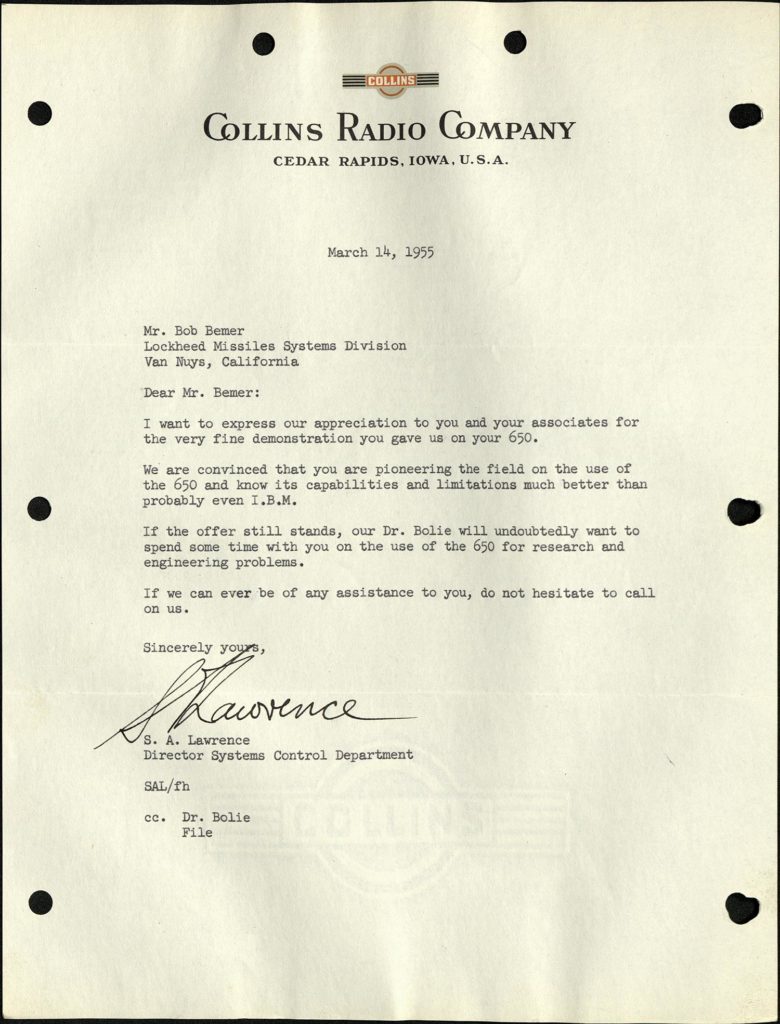
A letter from the Collins Radio Company offering support to Bemer.
Bemer’s work to disseminate the missile division’s use of the 650 for aerospace engineering and its related software was of mutual benefit to Lockheed, IBM, and Bemer himself. Bemer became widely known among the nascent computing community as a programming expert, and IBM and Lockheed remained at the center of developments in the use of IBM’s computers for technical work. This tripartite benefit to Lockheed opening its doors and sharing its software with IBM and its customers was the focus of a May 1955 letter from Fred L. Brown, an IBM manager, to Bemer’s boss, Art Hubbard.
It may come as little surprise for the reader to learn, then, that IBM poached Bemer just a few months later. Bemer left the Missile Systems Division to join IBM and its software efforts. At IBM, Bemer kept close watch on the development of FORTRAN, while he first created a system for performing floating-point calculations on the IBM 705, the company’s new and most-powerful business computer. This 705 system, called PRINT-1, was a continuation of Bemer’s creation of floating-point systems for the IBM 650 and IBM CPC. From PRINT-1, Bemer moved into software developments related to FORTRAN. 9
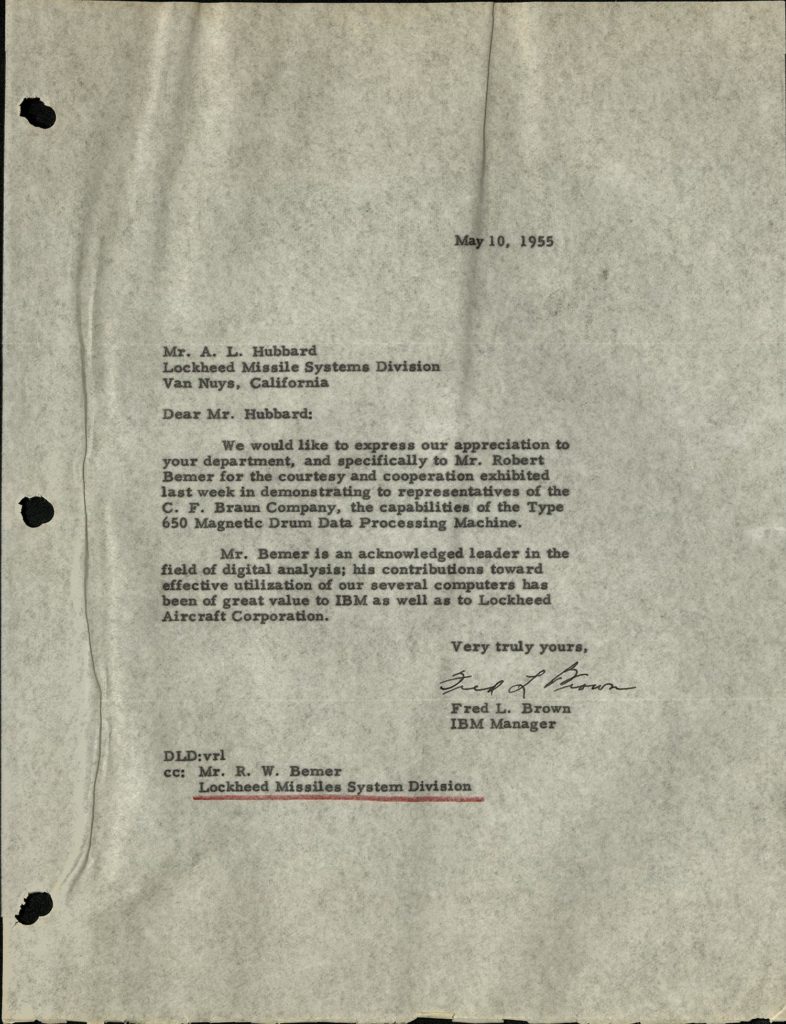
A letter from IBM Manager Fred Brown commending Bemer.
By 1957, Bemer was still with IBM’s Programming Research Department and had become an absolute devotee of what he called “automatic programming,” that is, programming in a high-level programming language and using compilers to create the executable machine code. In March 1957, Bemer published a short note in a now-obscure magazine, Automatic Control, titled “How to Consider a Computer.” In the piece, Bemer opined that “[a] computer should not be rented or purchased unless an automatic programming or coding system is furnished for its operation.” He continued, presenting a view of the “new synthetic languages..in…process which will affect your use of computers.” These high-level programming languages “will be essentially algebraic, both arithmetic and logical, and linguistic so that procedures may consist of real sentences in a living language.”10
In writing his article, it appears almost certain that Bemer had in mind the work being carried out contemporaneously in Grace Hopper’s Automatic Programming Department in the Remington Rand Univac division of Sperry Rand. How can one be confident of this? A letter, digitized as part of the Software History Processing Project, from Hopper to Bemer dated April 1, 1957, just after the appearance of Bemer’s article. In the very familiar letter, Hopper expresses her delight at Bemer’s opinionated article and gives him an update on her work with “B-Zero . . . now called Flow-matic by the Sales Department,” an early compiled programming language developed by Hopper for business software. Hopper’s English-like Flow-matic would prove instrumental in her subsequent work to create the famous COBOL programming language, still running many key financial and government systems today.11

Dr. Grace Hopper noting her appreciation of Bemer's article in Automatic Control.
These few selections from the Bob Bemer papers provide further insight into the importance of southern California to the rise of electronic digital computing and, in particular, the history of software. They underscore the way in which computer experts within the aerospace industry developed important capabilities in both hardware and software that was at par or even exceeded those within computer makers like IBM, and how these lead users within aerospace helped to build a community of other computer users and with computer makers. Bemer’s case shows how the lines between the contexts of the aerospace industry and the rising computer industry were highly permeable, with computer experts moving between the sectors, contributing to hardware and software developments within both.
Bob Bemer’s career went in many other directions over the course of the decades. He worked in timesharing computing, and in computing standards like ASCII, before becoming an early and vociferous voice in concern, public awareness, and technical solutions for the Y2K bug. All of these fascinating topics are touched on in the 3,000 digitized pages of the Bemer papers now available online through the Museum, and the finding aid surveys tens of thousands of additional pages in which an even fuller picture awaits future researchers.
For more about our Software History Processing Project supported by the National Archives’ National Historical Publications and Records Commission see: